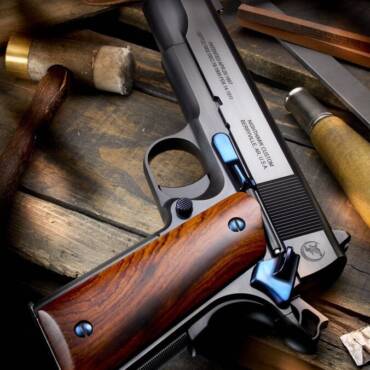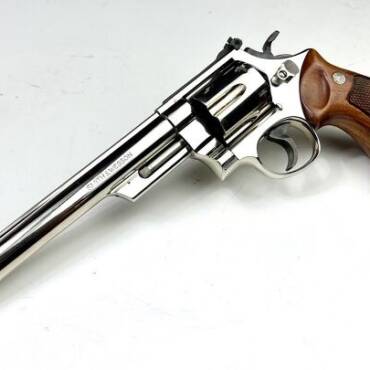Upgrading The AK Rifle: A Critical View (Part 1)
Many years ago, when I just started writing for TFB, I published a big article: Red dots on AKs: Critical View: Part 1, Part 2, trying to summarise the information about the use of reflex signs on Kalashnikov rifles. Since then, the topic of AK rifle modernization has become even more prevalent: every day we are seeing updates on conflicts in the Middle East where all sides are using AK and actively trying to modernize them. The war in Ukraine is another modern conflict where both sides have AKs and try to get the most out of this weapon system, even turning it into anti-drone weapons.
As an armorer, who worked for several private security companies in the Middle East and Africa, I always had to answer the question – should you allow security personnel to modify and upgrade their weapons?
That question might sound ridiculous to a lot of gun owners in the US, who have very few restrictions regarding what to do with their firearms (unless you’re trying to drill a forbidden third hole or put a buttstock on a short rifle). In the US, everyone has the right to be his own gunsmith.
But when the company owns the weapons, they want to make sure an employee (or a contractor) won’t ruin the gun he was issued with some stupid modification. The same problem exists in various “volunteer units”, where the commander wants to make sure that weapons are actually operational with all the gadgets that his free-spirited soldiers attach to their service weapons.
In order to prevent those issues, I created the outline of the SOP that I offer to units and companies that face the same problem. Basically, all weapon modifications are divided into three categories: Ergonomics (I), Technical Capabilities (II) and Sighting Systems (III).
Ergonomics (I)
The first category, “ergonomics”: includes everything that makes the gun more comfortable and easier to use: pistol grips, collapsible and folding stocks, triggers, enhanced safety levers, enlarged mag catches and charging handles.
Those upgrades make it easier for the shooter to manipulate the weapon and they do not require any permanent modifications of the firearm.
When it comes to this category, my recommendation was simple: the “operator” comes to the unit armorer, hands over the parts, and the armorer installs everything, recording upgrades in his logs.
Technical Capabilities (II)
In this category, we have all the upgrades that change the actual capabilities of the weapon: rate of fire, the velocity of the bolt, flash, sound, etc. Lightened bolt carriers, adjustable gas blocks and pistons, and non-standard recoil springs all fall into this category.
When someone changes one of the above-mentioned parts, it is very easy to damage the gun or make it inoperable. A lighter bolt carrier or lighter spring increases the velocity of the moving parts, increasing damage to the trunnion and decreasing reliability. Adjusting the gas flow can tame the recoil, but it can also make the gun inoperable in colder temperatures unless you know what you’re doing.
So generally I suggested that those modifications should only be performed by the unit’s armorer in case the weapon is unserviceable and actually needs to be modified in order to be fully operational again. One example is various craft-made short-barreled rifles I had in Afghanistan and Iraq, modifying their gas system as a necessity just to make sure they would work.
Muzzle devices also belong to this category. Many suppressors can increase backpressure, which negatively affects the reliability of the weapon. Adding a brake to an AK might not sound like a big deal, but there are plenty of problems I encountered when people attempted to do it.
Once at the special forces competition, we were testing prototypes of reactive brakes, and one particular device impressed the entire range. It kept the AK 74 very flat, but the sound it created was so violent that it felt like a wave of electric shock going through the body, despite the fact I wore ear protection.
We could not even finish the second magazine – everyone at the range told the shooter to take the device off the gun, cause people were getting dizzy just standing next to him. I’ve seen certain PSD team members in Kurdistan installing similar brakes to their guns, and I cannot imagine how much hearing damage it would create if they actually used their rifles.
Another example was the operator from a PSD unit, who served in a large government agency. He was an excellent shooter, and one day we were training together and realized he could not hit a chest size target from 50 yards with his service rifle. Turns out he installed the new break, but didn’t tighten it properly, and the bullets touched the edge of the break after leaving the bore.
The third example was a suppressor I once used on the short Bulgarian AK. With every shot, the suppressor was launching itself into the target just like a rifle grenade. So, when dealing with muzzle devices of questionable quality, make sure there is an armorer who can check the alignment of the can and make sure it is safe to use.
Obviously, when it comes to your own weapons, there is no obligation to ask a local gunsmith to install every new part you buy. But when you’re dealing with a unit, I believe certain procedures should be in place to make everyone’s life easier.
In the next part of the article, I will talk about category III upgrades – sighting systems and the challenges one might experience when installing modern sights on the AK.


